
Like that page title? ESO VLT… has a scientific ring to it! But the meaning’s pretty simple.
After our King Crimson tour ended, in Santiago, Chile, a few of us took a trip to the north of the country, where, in the Atacama Desert, high in the mountains, the European Southern Observatory (ESO) has it’s very large telescope array (VLT), one of the largest optical telescopes in the world.
I was here two years ago, and was thrilled by the place, and the photos of the stars I was able to get nightly. This is about as good location as we have on earth for that. Not only because we’re high up (8,600 feet altitude) but it’s a very dry region, with little water vapor to affect the light from above. And the clouds are below the array, so the weather is very consistant.
The first shock on arrival comes from seeing the hotel, or living area…

It’s designed to let very little light come out to ruin the nearby telescope’s view.

Pat is, like me on my first visit, feeling like he’s gone to Mars or someplace other-worldly. There’s no vegetation here.

The back of the hotel has, yes, some windows, and to the side a view of the array we’ve come to see.
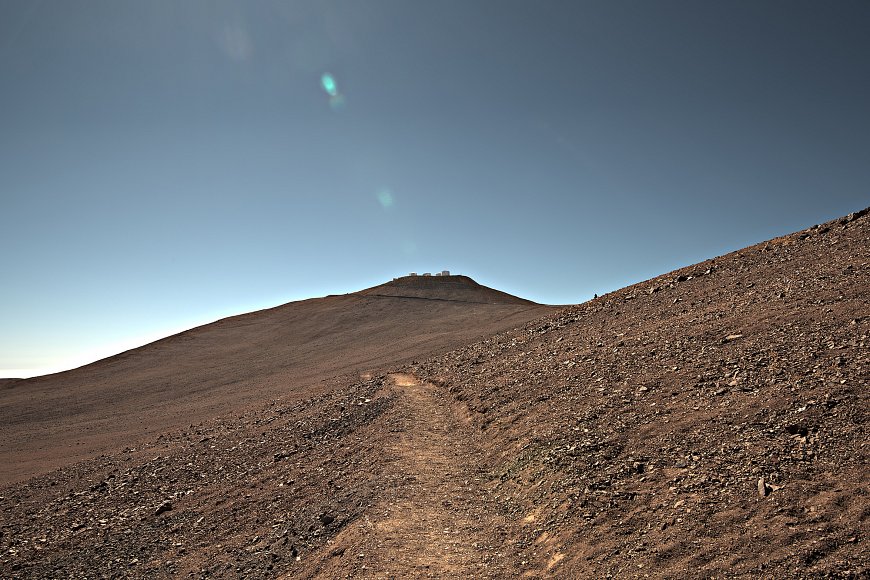
It’s walkable from here, but we got a ride



And a tour of one of the fantastic telescopes. (There are four, and with some tricky science they can combine their light received to create essentially a fifth telescope with a very very large light gathering area.)

Pascale is our guide to the wonders of the telescope. Our group included Jason, who’s Crimson’s production mgr, his girlfried, artist, Claudia. Iona, who handles Crimson’s VIP packages, and in other pictures you’ll see David, who’s Crimson’s manager, and band members Pat Mastelotto and myself.
I’m sure Jason could have cleaned up this mess of wires… it’s simpler than Jeremy’s keyboard rig, which he deals with nightly… but he seemed happy to just look. (Busman’s holiday, I guess.)



Within the building, the huge telescope array swivels in any direction… here it’s clearing away from the top of the building while the ceiling parts for tonight’s work, so we get to see the stars-eye view of it.
You can see the small and larger mirrors which bounce the star light, and the black boxes are lasers… you’ll have noticed in the photo at page top the beams of light heading up toward the Milky Way… that’s a feature of the telescope that, with computers, measures and adjusts for water vapor bending the light up high in the atmosphere. They’ll run the lasers for only an hour or so, to make their adjustments before the night’s experiments begin.

Next we head back outside to wait for the sunset


It’s usually only from a plane that you get to see the sun set down into… the clouds.


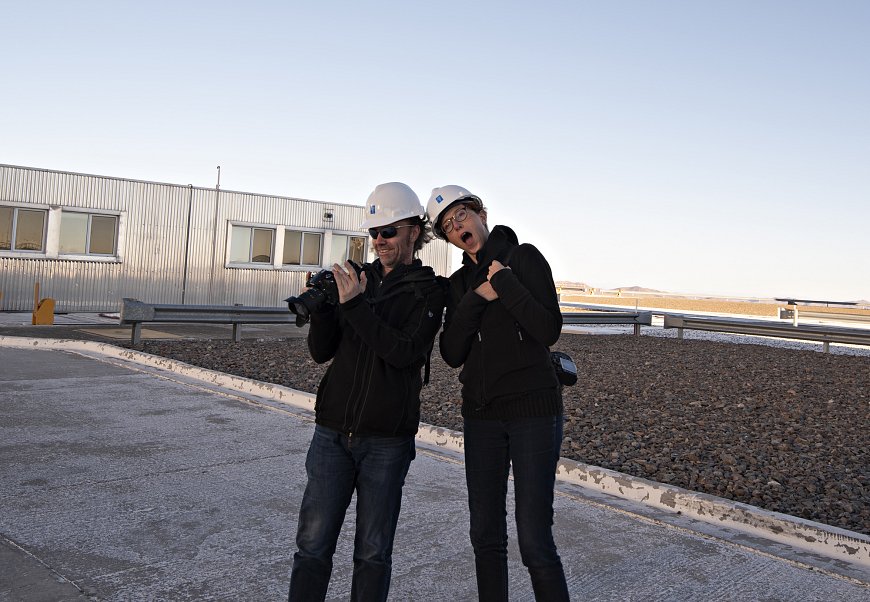
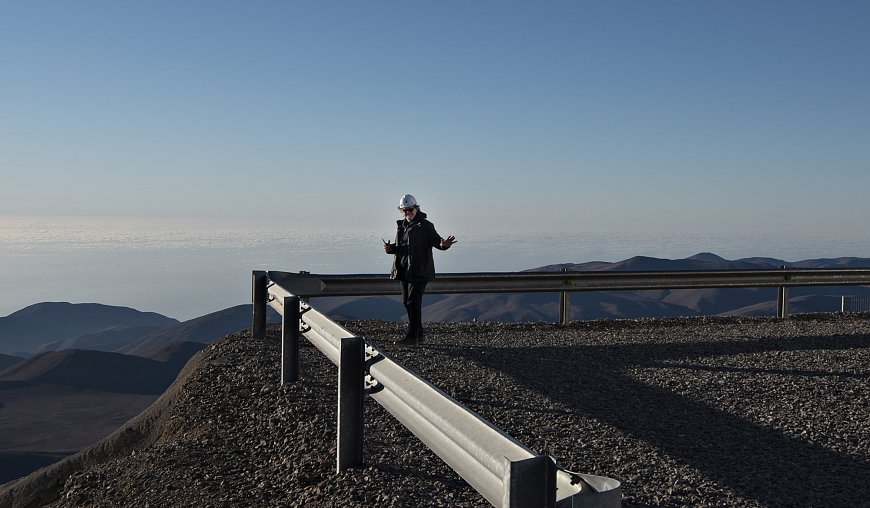








A slight diversion before the night time pictures of the stars. First of all, the first night of the two nights we’re here, there was a big problem for shooting pictures: the Moon! Darn, everyone online was raving about how big and great the full moon was… all I know is I couldn’t get any pictures, the sky was too lit up with… well, I’m not going to call it ‘light pollution’, but… harumph.
Secondly, I want to show the excursion we went on in morning two, to the site where they’re constucting an even bigger telescope, an Extremely Large Telescope (ELT!!)

Off in the distance (this is about 40 min. drive from the Paranal array) is Cerro Armazones, another mountain, where after six years more of construction, they’ll have the worlds largest mirror telescope beginning it’s nightly work. And we’re heading up to visit it.

This makes just helmets from back at Paranal seem like a simple way to get around. Here they’ve got us in jackets, vests, helmets, goggles and steel toed boots. What do you think, Pat… new stage gear for the band?
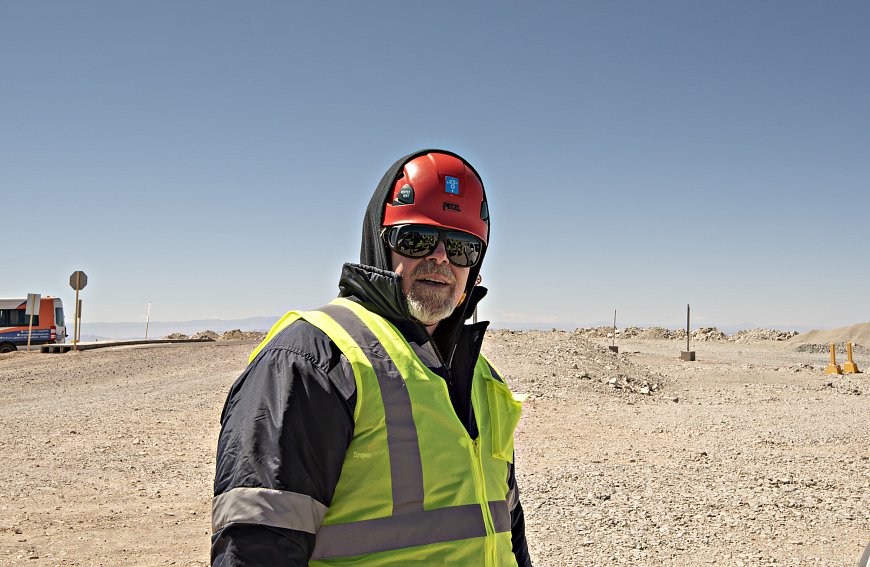


It’s very windy up here, and very cold. And, did I mention, it’s 9,800 feet in altitude - pretty hard to catch your breath. I keep thinking about the crew working here… and the project isn’t going to be done til the year 2025!

Hey, Jason, maybe they need a production mgr!
(by the way, off in the distance, between Claudia and Jason, that’s the Paranal observatory we just came from.)



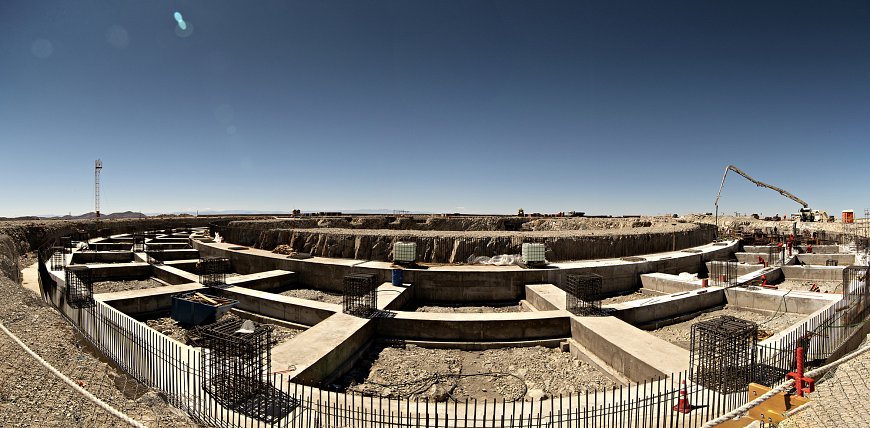

and, in the evening… lasers are on…


I’m out early, trying to catch what views I can after the sun’s down and before the moon rises.
Luck’s with me tonight, and there’s about a half hour window with good light (i.e. no light!) Not like my visit back in 2017, when I’d spend the whole night outside taking pictures… focusing on the stars is harder than you’d think, at least for me.

Click on any picture once or twice and you’ll get a larger version of it.

For a minute I thought I’d found proof that spacetime is curved when I saw how the lasers came out…

But no, it was just my poor photo stitching!
After awhile out in the cold night, hypnotized by the stars, I went back into the residence, grabbed some dinner, and then Pat and I jammed with some of the science guys who work here… a lot of them are musicians too.
It was a super visit, again inspiring to me to see not only the beauty of the heavens but mankind at it’s best, devoting all these resources and human talent to enlarging our knowledge of the world.
Our thanks to the European Southern Observatory, to our wonderful hosts Christine Desbourdes and Pascale Hibon, to the workers who let us interrupt the routine, to the players who lent us their instruments and played up a storm. And to Simon Lowery, who set the whole visit up.


p.s. Our thoughts and hearts are with the people of Chile as they are going through a very difficult time, the news of which began just days after we left.
